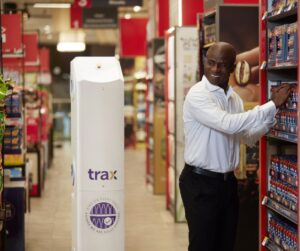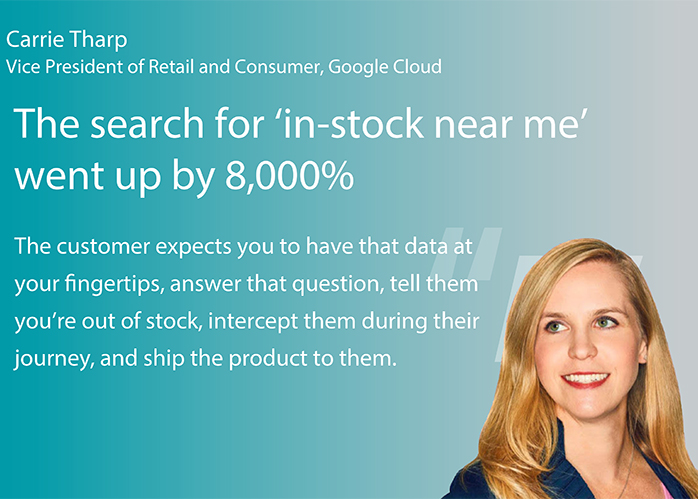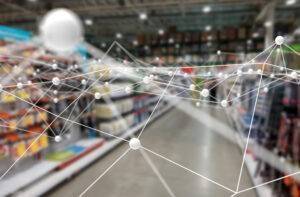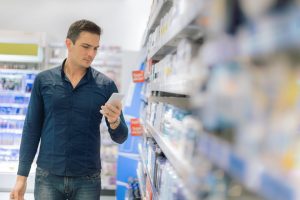Trax Retail Renaissance 2021: Leaders of Retail and CPG weigh in on how to adapt and thrive in the new retail reality
The retail market went through a dramatic change as the pandemic raged around the world in the past year and a half. In response, some retailers and consumer packaged goods (CPG) brands have been working hard to enhance the customer experience and delight shoppers in their journey, while others have fallen behind. At the Trax Retail Renaissance 2021 roundtable, retail experts shared some of the recent trends in the industry and gave advice on how successful brands and retailers should respond in today’s climate.
Digitizing stores to enhance customer experience
A funding report from CB Insights shows retail technology investment has soared to $28.9 billion in , compared to $18 billion in the preceding quarter. This is evidence that brands and retailers are preparing themselves for post-pandemic life by investing in new technology for a seamless, contactless shopping experience.
Amazon, for example, recently brought its latest palm-reading biometric authentication system to its stores, which allows shoppers to purchase products simply by scanning the palm of their hand to connect their unique ‘palm signature’ to a credit card or Amazon account. Advances in logistics technology, such as automated robots, have also made a big impact on store operations, ensuring that shelves are well-stocked and price labels are correctly placed at all times.
Technology is being employed by CPGs to improve in-store execution, and by retailers to improve store operations. Trax offers cutting-edge technology for both. Its sophisticated tools can gather retail data that brands need for store audits via its mobile app, shelf cameras, and roving store robots. It also provides demand forecasting and more efficient data gathering technology to retailers for product storage, retrieval, and delivery.

For instance, Trax Retail Execution uses advanced image-recognition technology and deep-learning algorithms to digitize the shelf and maximize sales. At the same time, Trax Shelf Fix quickly shows if items are missing from shelves and sends instant instructions on the mobile app to fix misplacements.
“We’re looking to anticipate and lead the trends. [For example], we launched functionality around cryptocurrencies. We’re thinking ahead about the new technologies, and the jobs to be done for consumers to take the stress out of how they conduct everything within their financial world.”
– Carrie Tharp, Vice President of Retail and Consumer, Google Cloud
“Proximity stores are great at convenience, pharmacies at trust and credibility, and grocery stores at freshness and choice. They need to double down on their reason for being, but they need to leverage technology and make sure they become even better on those positions of strength. Make sure people are not disappointed when they come to the store. Permission for failure from a shopper has disappeared because they have an alternative on their phone and can replace the retailer overnight.”
–Ivan Barton, VP Sales, Emerging Markets, Beiersdorf
Breaking down silos
The post-pandemic world has demonstrated that retailers and CPGs need to break down information silos and create a 360-degree perspective for more efficient and profitable relationships. Retailers must require their in-store operations teams and e-commerce teams to collaborate for a better omnichannel experience. For CPGs, it’s the silos between corporate headquarters and field sales teams that need to be broken.
When employees work in silos, they become short-sighted, focusing only on their department’s objectives and bottom line. Not having a common goal leads to inconsistencies in the priorities, therefore affecting consumers. By breaking down these barriers and increasing cross-functional collaboration, retailers and brands can see the bigger picture, and offer an enjoyable experience to shoppers at every step of their journey.
“The one thing, when you talk about going across silos, is to drive extreme focus, almost a mania, for OSA, which is the critical thing going forward.”
–Ivan Barton, VP Sales, Emerging Markets, Beiersdorf

Combining the physical and digital in new ways
While the pandemic boosted e-commerce and home delivery options, many consumers continue to buy items such as groceries and clothing in-store because they can assess the freshness of the fruits and vegetables before purchasing, and gauge the fit and style of clothing before paying for them.
But technology is providing unique experiences to consumers digitally, and is changing the way people buy in certain categories, including clothing. For instance, online shoppers of ASOS can use the augmented reality-based ‘See my Fit’ technology to “try” on clothes without ever setting foot in a store. On the flipside, retailers like Macy’s have begun experimenting with similar technology at its brick-and-mortar stores, where customers can furnish a virtual room with selected items and then use a VR headset to see if they like how the room might look in their own home.
“In 2023, successful retailers and CPGs will have to move twice as quickly as they did in 2020, and in 2025 they’ll have to move twice as quickly as they did in 2023. This requirement to evolve your business with new technologies will keep accelerating. Companies that don’t figure this out will be absorbed by those that do, or go out of business.”
-James McCann, CEO, Food Retail Ventures

To uncover more insights from the Trax virtual roundtable, read our blog on the top takeaways from the event.



